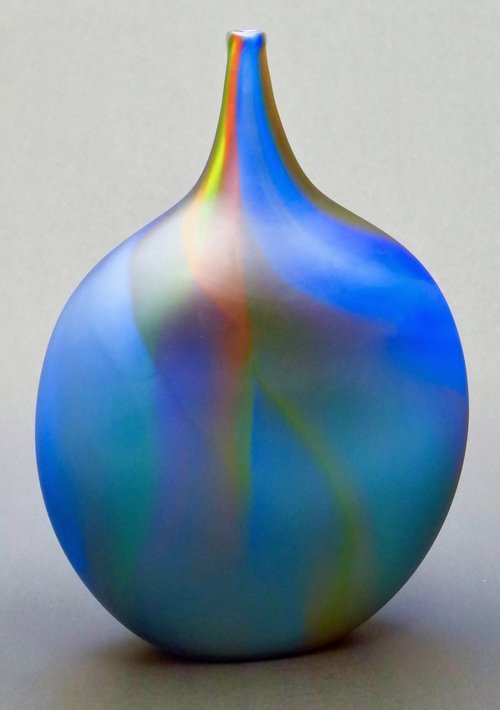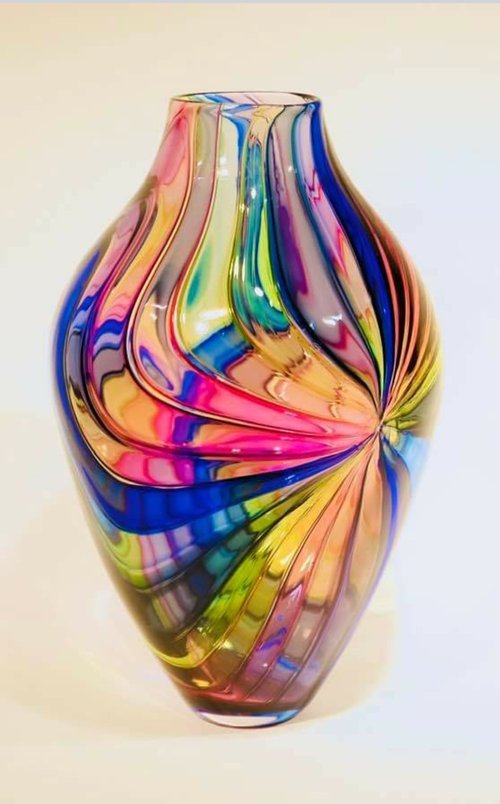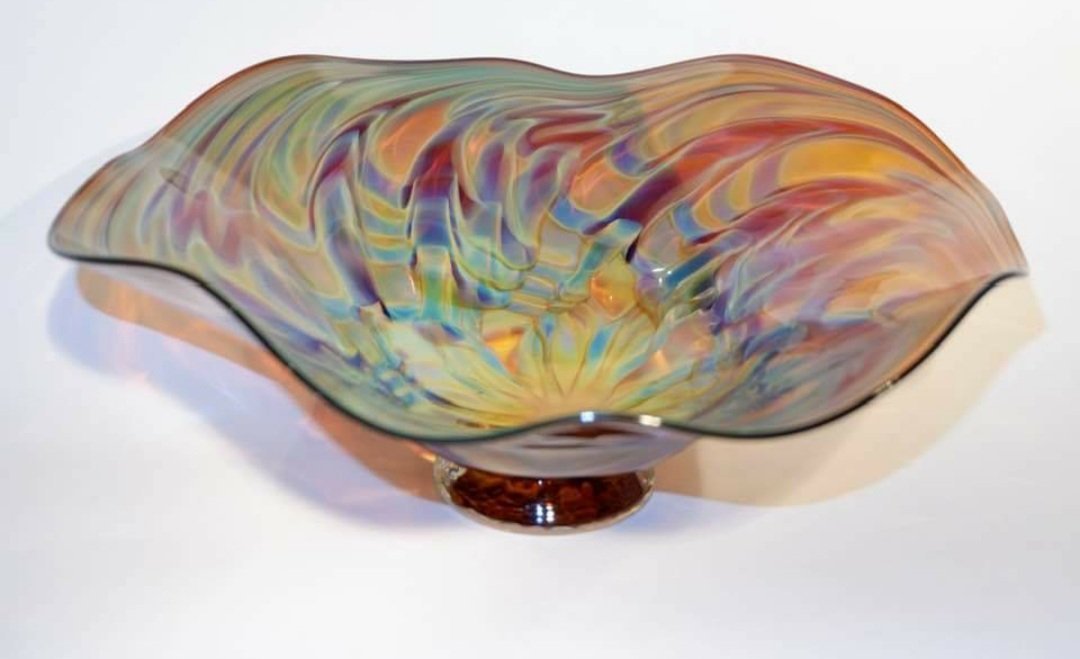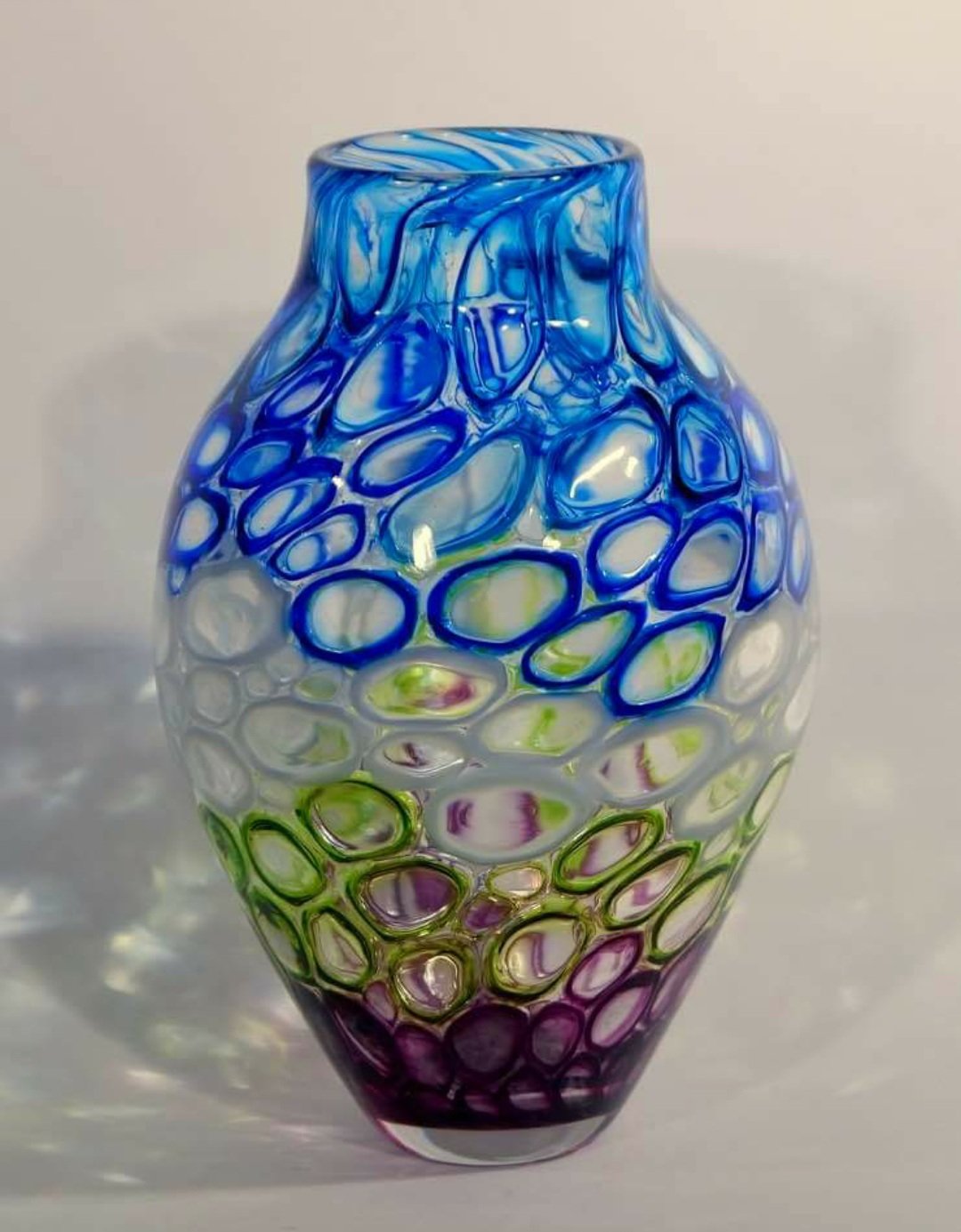Pringle Teetor answers top 10 glassblowing questions
When people find out that I am a glassblower, the questions start coming! I thought I’d put them in a blog for anyone to read. Here we go – top 10 most asked questions with my answers!
10. How did you get into glassblowing?
It was a complete accident. I retired from running my husband’s periodontal practice and was going back into the art world as a photographer. On a whim, I took a one-day workshop in glassblowing and fell in love. Working with molten glass is magical – the movement, the colors, the heat. It’s mesmerizing!
9. Don’t you get hot? How do you stand the heat?
My partner says that I grew up in New Orleans and just don’t know the difference! True, it is very hot in our studio, even in the winter. The reheating furnace we use puts out heat at about 2000 degrees. We do have fans blowing on us and we have to drink a lot of water to stay hydrated. Our studio isn’t air conditioned so if it is 85 degrees outside, it is about 105 degrees inside, or 95 outside, 115 inside. The humidity gets you more than just the heat.
We shut the studio down at the end of June. During the summer, we do maintenance on the furnace and the equipment and usually start back up in early October.
8. What do you start with when you begin a piece?
We start with clear molten glass that is at about 2000 degrees. In our studio we melt raw ingredients. This is called batch and it is supplied by a company in Spruce Pine NC. To melt the glass, it is a 2-day process to get 200 lbs. of beautiful clear glass. 25lbs of the batch is poured into the furnace at a time. This takes about 2 hours to melt before another 25 lbs. can be put in. Once the crucible is filled, then there is a process to cook the glass at about 2200 degrees, and then slowly cool to 2000 degrees so the bubbles from the cook process rise to the top, or “fine out”. We have to do this about every 2-2 ½ weeks.
7. How do you get color in the glass?
We buy color from the only 2 suppliers in the world that sell glass for our needs. Both are in Germany. Metal oxides are used to make the concentrated color which comes to us in different forms from solid concentrated rods of color all the way down to a fine powder. The color pieces in between are called “frit” and it looks like what you would use in the bottom of a fish tank, in various sizes. I use different types of color and melt it into the clear. Glass colors don’t mix like paint colors.
6. Why are some ornaments more expensive than others?
Sometimes it is the technique that is used to make the ornament, but it usually boils down to the color. While some colors are not too expensive, other colors are much higher in cost due to the chemistry of the color. Colors that have gold or silver in the chemistry are expensive, but in my opinion, also the prettiest!
5. Why is blown glass so expensive?
Well, it’s not like you can go into a spare room in your house or garage and blow glass like you can in other art forms. Our studio is a very industrial and fire-proof setting. When we turn our furnace on in September, it stays on until we shut it down at the end of June. 2000 degrees, 24 hours a day, 7 days a week. Our furnace is electric. Our reheating furnace is propane and we only turn it on when we are blowing in the studio. The overhead is very high, but the art form is stunning!
4. It is hard to blow and does the heat hurt your lungs?
Blowing in the end of the pipe is a lot like blowing bubble gum. You don’t need to blow hard if the glass is hot enough. Hot for us is about 2000 degrees. When glass cools down too much to blow, it’s about 1900 degrees. We glassblowers have a warped sense of temperature!
We are constantly reheating pieces as we work to keep it at the proper temperature.
3. Are some colors more difficult to blow than others?
Oh yes! Some colors are what we called soft and others are stiff. This means that at the exact same temperature, one color, say blue, can be dripping off of the pipe, while another color, like white, is barely moving. So, when you have a piece with a lot of different colors (my specialty!) they are much more difficult to blow than a piece of just one color. You have to heat and cool the piece accordingly, to build up hat in the stiffer color while cooling down the heat in the softer color to get them to equalize. Otherwise, one area will blow really thin and the other area will be thick.
2. If something breaks can you recycle the glass?
We only recycle the clear glass. Once it has color in it, you can’t put it back into the furnace. I sometimes make jewelry out of the scraps or save it for friends for mosaic projects.
1. Someone always asks “The stem broke off of one of my wine goblets or, I need to replace a part of a light fixture that broke or a glass in a set. Can you fix it or make another one to match?”
The answer is no. it can’t be remelted and reattached. Glue is your best option. As for matching something – I don’t do that kind of work. You would need to go back to the source and buy another.
Bonus question: Why do you only blow orange things (when someone is watching live)?
Because, no matter what color you are working with, when it’s hot, it’s orange!





